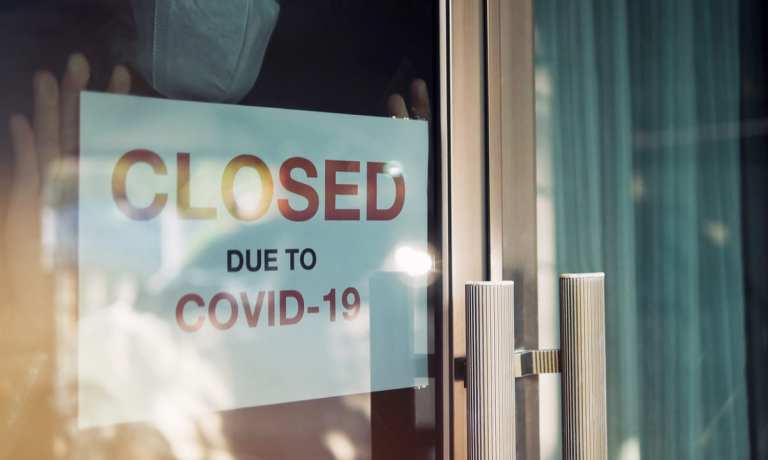
Logic-defying though it might be, it seems that the COVID-19 pandemic has found a way to get just a little bit worse as 2020 is coming to an end. Reports out of the U.K. indicate a new strain of the virus has emerged in parts of Britain.
The good news (at least somewhat) is that the new COVID-19 strain doesn’t appear to be more lethal than the standard variety, although it seems to spread more easily. U.K. Prime Minister Boris Johnson said over the weekend the new strain is behind a recent, rapid explosion of case numbers in London and Southern England, and he called for a full shutdown of gatherings there.
Meanwhile, the country’s European neighbors are locking U.K. residents out of international travel during the holidays. France, Germany, Italy, Russia, the Netherlands, Denmark, Poland, Belgium, Austria, Ireland, Norway and Bulgaria all announced restrictions on U.K. travel. So did India, Canada, Israel and Hong Kong.
New York Looks At Strict New Lockdowns
Notably, the United States so far hasn’t banned U.K. flights — a point of contention for New York Gov. Andrew Cuomo, who’s advocating a ban on flights from Great Britain to New York City. The Democrat said the first wave of coronavirus infections in New York “came from Europe and we did nothing,” adding that doing nothing again would be “negligent.”
And in an attempt to avoid a repeat of what the governor categorized as New York’s early negligence, New York City is contemplating a new round of shutdowns akin to the state’s PAUSE program put in place last spring.
New York City Mayor Bill de Blasio said he’s been in close contact with the office of Cuomo, who’s the final arbiter of any changes to state COVID-19 rules. It’s not clear if Cuomo is on board with de Blasio’s proposal, which would effectively shut New York City down the day after Christmas for two to four weeks in an attempt to bring the virus to heel.
“Clearly these numbers are going in the wrong direction,” de Blasio said, as per local media. “Unfortunately — and I don’t say it with anything but sorrow — but I do think [a shutdown] is needed. We’re going to need to do some kind of shutdown in the weeks ahead, something that resembles the PAUSE we were in in the spring.”
California’s Stringent Rules
Meanwhile on the other side of the country, new California stay-at-home orders and business shutdowns have gone into effect in areas where hospital intensive-care units have become more than 85 percent full.
That means the majority of the state is going into lockdown. (Unless, of course, officials refuse to enforce the rules, as sheriffs in two counties that are collectively home to more than 5 million people have said they’ll do.)
The wide-ranging shutdowns limit restaurants to carry-out, and also shutter hair salons, barbershops, museums, movie theaters, amusement parks, live-audience sports and indoor and outdoor play areas and recreational facilities. People also must wear masks, and cannot congregate indoors or outdoors with non-household members.
“We are at a tipping point in our fight against the virus and we need to take decisive action now to prevent California’s hospital system from being overwhelmed in the coming weeks,” California’s Democratic Gov. Gavin Newsom said. “I’m clear-eyed that this is hard on all of us, especially small businesses.”
Bad News For Small Businesses
Of course, saying that this is “hard … especially on small businesses” is putting it incredibly mildly, according to PYMNTS’ latest SMB survey data.
On the whole, PYMNTS found that small and medium-sized businesses (SMBs) that have weathered the pandemic so far are feeling more optimistic about their future than they did half a year ago when the pandemic was still new. PYMNTS research shows that 54 percent of SMBs now feel that they are “very” or “extremely” likely to survive the pandemic, whereas only 48 percent said the same in June.
The recent news surrounding the approval of COVID-19 vaccines has alone helped further improve merchants’ confidence in their survival by 1.8 percentage points. However, should new lockdowns occur, 8.5 percent fewer Main Street SMBs said they’d be hopeful of surviving.
Devastating though that would be for a significant swatch of small businesses, the rising case numbers have a majority of SMBs surveyed (74 percent) saying that closures are coming back.
How Small Businesses Will Respond To New Lockdowns
Firms from different sectors are planning to take varying approaches if and when they’re forced to shut down in response to the latest surge.
Nearly a third of at-risk firms plan to lay off their employees and continue working alone, whereas 43 percent intend to operate their businesses from home. Another quarter plan to borrow more money to keep their businesses afloat, while a small but still significant share (12 percent) expect to permanently cease operations.
And while it’s not yet clear that lockdowns will soon be everywhere, it’s clear more are coming to some places. In other words, many SMBs will soon have another storm to weather before the year is out.